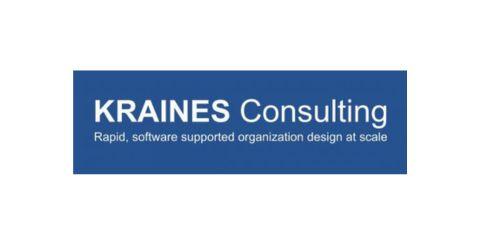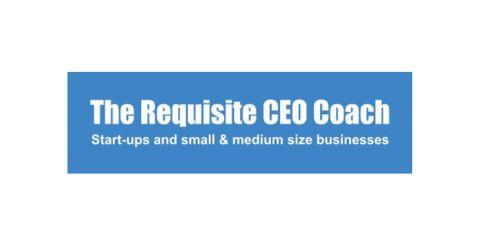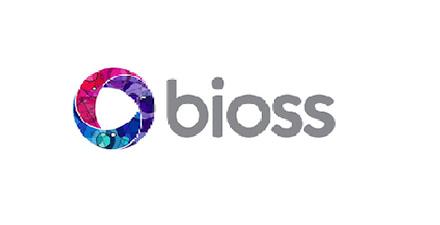Human Capability
A study of individual potential and its application

Obtain this book
Study Human Capability in any depth that you wish.
Accessing and understanding the theory and technical resources
-
Obtain the entire book from Amazon, a used book store, or from your local library.
-
Prompts to use with your favourite AI LLM to produce a summary of any length.
-
A prompt to produce a condensed version of the book - approximately 15% it's original length
-
A prompt to produce a contextual analysis of the book (This prompt was tested and works in Gemini advanced and it may work in other LLMs)
- A test for you to self-assess your knowledge of the above book-related study materials.
Ideas to help build the recommended systems and processes
Ideas to help change behaviours required to use the theories and the systems and processes above
-
A series of white papers on changing behaviours by building new Requisite habits and breaking previous less effective habits.
A forum for you to share comments and discuss the book, building systems and behavioural change and with others.
Book Summary: Human Capability -- A Study of Individual Potential and Its Application
Introduction
"Human Capability: A Study of Individual Potential and its Application" by Elliott Jaques and Kathryn Cason presents a revolutionary framework for understanding human potential and its relationship to work complexity. Published in 1994, this landmark study is the culmination of decades of research by Jaques, who first gained prominence in the 1950s with his discovery of the time-span measurement of work.
The book introduces a methodology for objectively evaluating an individual's current and future potential capability, connecting this capability directly to organizational structure through a recursive hierarchy of mental processing types. While the book's technical nature may initially seem daunting, its insights offer extraordinary value for executives and organization designers seeking to build more effective enterprises.
Main Themes
The Nature of Work and Human Capability
Jaques and Cason begin by addressing a fundamental challenge: despite work's critical importance to human society, little is definitively known about its nature or about the capability to perform it at different levels of complexity. The authors define work as "the exercise of judgment and discretion in making the decisions necessary to solve and overcome the problems that arise in the course of carrying out tasks." This definition establishes that all work is inherently creative and problem-solving in nature.
The authors distinguish between three key aspects of capability:
- Current Potential Capability (CPC): The maximum level at which a person could work at any given time, provided they value the work and have the necessary knowledge and experience.
- Current Applied Capability (CAC): The level of capability a person actually applies in specific work, which is always less than or equal to their potential capability.
- Future Potential Capability (FPC): The predicted level of potential capability a person will possess at some future time.
A central proposition is that Current Potential Capability is determined exclusively by a person's complexity of mental processing, which matures along predictable pathways throughout life but is independent of acquired knowledge or social opportunity.
The Four Types of Mental Processing
The core of the study reveals that there are four—and only four—distinct patterns of mental processing that people use when engaged in problem-solving:
- Declarative Processing (or "or-or disjunctive"): A person presents various separate reasons for their position, with each reason standing on its own without connection to others. Example: "I disagree for these reasons: First, it's too expensive. Second, the timeline is unrealistic. Third, we lack the necessary expertise."
- Cumulative Processing (or "and-and conjunctive"): A person brings together multiple reasons that collectively support their position. Example: "When you consider the cost together with the timeline constraints and our current expertise, it becomes clear we should pursue a different approach."
- Serial Processing (or "if-then conditional"): A person constructs a chain of linked reasoning where each step leads to the next. Example: "If we invest in this technology, then our production efficiency will increase, which will then reduce costs, which will then allow us to lower prices, which will then help us capture more market share."
- Parallel Processing (or "if-and-only-if bi-conditional"): A person considers multiple serial chains of reasoning simultaneously, comparing them and potentially incorporating elements from different chains. Example: "If we pursue strategy A, it would lead to quick market entry but create quality risks. Alternatively, if we pursue strategy B, we'd have better quality but slower market penetration. The optimal approach might be to combine elements from both..."
Orders of Information Complexity
The authors discovered that these four processing types recur at progressively higher orders of information complexity, creating a recursive hierarchy:
- First Order (Concrete): Processing concrete, directly observable objects and events.
- Second Order (Symbolic): Processing symbolic representations in everyday language.
- Third Order (Abstract Conceptual): Processing abstract concepts and systems of ideas.
- Fourth Order (Universal): Processing universal principles and paradigms.
Each combination of processing type and information complexity creates distinct categories of mental processing. For example, "B3" represents symbolic (second order) serial processing, while "C2" represents abstract conceptual (third order) cumulative processing.
The Measurement of Work Complexity
A significant contribution by Jaques was his earlier discovery that the level of work in any role can be objectively measured by what he termed the "time-span of discretion." This refers to the longest-targeted completion time of tasks assigned to a role. For instance, if the longest task assigned has a 6-month target, the time-span is 6 months.
Importantly, Jaques discovered natural discontinuities in organizational layers that correspond to specific time-spans:
- Stratum I: 1 day to 3 months
- Stratum II: 3 months to 1 year
- Stratum III: 1 year to 2 years
- Stratum IV: 2 years to 5 years
- Stratum V: 5 years to 10 years
- Stratum VI: 10 years to 20 years
- Stratum VII: 20 years to 50 years
The study demonstrated a precise one-to-one correspondence between these organizational strata and specific categories of mental processing:
- Stratum I: B1 (Symbolic Declarative)
- Stratum II: B2 (Symbolic Cumulative)
- Stratum III: B3 (Symbolic Serial)
- Stratum IV: B4 (Symbolic Parallel)
- Stratum V: C1 (Conceptual Declarative)
- Stratum VI: C2 (Conceptual Cumulative)
- Stratum VII: C3 (Conceptual Serial)
Maturation of Potential Capability
Another groundbreaking aspect of this work is the evidence that potential capability matures throughout life along predictable pathways. This fundamentally challenges the conventional wisdom that cognitive development is complete by late adolescence.
The authors present a multi-track theory of maturation, demonstrating that individuals mature along different bands with different endpoints (or "modes"). Those with higher modes mature more rapidly and continue developing into old age. For example, a person whose maximum potential will reach Stratum VII (C3 processing) will develop more rapidly and continue developing longer than someone whose maximum potential will reach Stratum III (B3 processing).
This maturation process is constitutionally established and proceeds regardless of education, social status, or gender, provided severely detrimental environmental conditions are absent. The authors emphasize that this has significant implications for fair employment practices, as potential capability will mature even in disadvantaged individuals, though they may lack the opportunity to apply it.
Current Applied Capability
While potential capability is determined solely by complexity of mental processing, current applied capability (CAC) depends on three additional factors:
- Value (V): How much a person values or is committed to the specific work.
- Skilled Knowledge (K/S): The facts, procedures, and skills necessary for the work.
- Temperament (-T): The absence of dysfunctional personal characteristics.
They express this relationship as: CAC = f(CMP • V • K/S • (-T))
The authors note that many workplace motivation issues stem from non-requisite organizational structures that fail to allow full expression of employees' potential capability.
The Research Study
The core of the book presents the results of a rigorous study conducted in two companies already organized according to the stratified system described by Jaques. The study involved 72 subjects across organizational levels from Stratum I to VI.
Each subject was engaged in discussions on topics of personal interest and on the legalization of drugs, allowing researchers to observe their mental processing patterns. The researchers then evaluated each subject's category of mental complexity without knowing how the subject's manager or manager-once-removed had evaluated their potential capability.
The results were striking, with correlations of 0.97 between the researchers' judgments based on mental processing and the independently made evaluations of current potential by managers and the subjects themselves. This extraordinarily high correlation clearly validated the authors' key hypothesis.
Importantly, in cases where a subject's current role differed from their judged potential capability, the mental processing evaluation matched the judged potential rather than the current role level, further supporting the validity of the methodology.
Key Insights for Executives and Organization Designers
1. Requisite Organizational Structure
The findings explain why managerial hierarchies have persisted for thousands of years and likely always will. Effective managerial leadership requires managers to operate at one level of mental processing higher than their immediate subordinates in order to set an appropriate context for their work.
For example, a manager using cumulative (B2) processing can effectively set context for subordinates using declarative (B1) processing. A manager using serial (B3) processing can effectively set context for subordinates using cumulative (B2) processing, and so on.
This insight explains why organizations with too many layers or improperly structured layers experience inefficiency, frustration, and communication problems. It also clarifies why some managers are experienced as "micromanagers" (context too narrow) while others are seen as "too distant" (context too broad).
2. Corporate Structure and Strategic Levels
The research offers a compelling explanation for why larger corporations tend to optimally place profit-and-loss business units at Stratum V (C1 processing level). This creates a crucial linkage between operational business activities (handled through second-order symbolic processing) and corporate strategic activities (requiring third-order conceptual processing).
For executives, this provides a powerful framework for designing more effective organizational structures that align with the natural capabilities of their leadership teams.
3. Talent Development and Succession Planning
The ability to accurately evaluate both current and future potential capability transforms talent pool development and succession planning. Instead of relying on psychometric tests or assessment centers, organizations can implement more reliable processes where managers-once-removed (MoRs) evaluate the potential capability of their subordinates-once-removed (SoRs).
Since the research demonstrates that these evaluations can be highly accurate (with inter-rater reliability above 0.9), this approach can significantly improve talent identification and development while eliminating biases related to gender, race, education, or background.
4. Fair Employment Practices
The framework provides a powerful tool for evaluating equal opportunity in organizations by identifying how many employees are involuntarily working in roles below their potential capability, and whether this underutilization disproportionately affects certain groups.
The authors emphasize that a fair and just society must provide opportunities for all citizens to utilize their full potential capabilities. They argue that widespread underemployment of talent is a "fundamentally evil and wasteful" practice that reduces both economic output and individual well-being.
5. Selection and Recruitment
The methodology allows for more effective assessment of external candidates by evaluating their complexity of mental processing during interview discussions. This provides a more reliable predictor of capability than traditional methods while reducing biases related to background or education.
6. Maturation and Career Development
Understanding the predictable maturation patterns of potential capability enables more effective long-term career planning. Since individuals mature along different bands with different endpoints, organizations can better anticipate when individuals will be ready for roles at higher organizational strata.
This challenges the common practice in Western companies of retiring executives at 60-65, precisely when many high-capability individuals are reaching their peak mental complexity. The authors contrast this with Japanese companies that utilize senior executives effectively into their 70s.
7. Nature of Leadership and Creativity
The framework challenges conventional wisdom about leadership and creativity. Rather than requiring special personality traits, effective leadership and creativity depend primarily on having:
- The necessary level of complexity of mental processing
- Strong commitment to the work
- Relevant skilled knowledge
This insight can reshape how organizations approach leadership development and creative work.
Practical Applications
- Organizational Design: Structure organizations with the appropriate number of strata based on the complexity and time-span of the enterprise.
- Talent Pool Development: Implement systematic processes for managers-once-removed to evaluate and develop subordinates-once-removed, providing appropriate mentoring for career development.
- Selection and Promotion: Base selection decisions on evaluations of mental processing complexity rather than solely on knowledge, experience, or personality traits.
- Role Definition: Define roles with clear accountability and appropriate time-spans to match the potential capability of incumbents.
- Succession Planning: Identify individuals with appropriate current and future potential capability for key roles, recognizing that higher-mode individuals may be ready for more rapid progression.
- Fair Employment: Regularly evaluate whether all employees have opportunities to work at levels consistent with their potential capability, regardless of background.
- Executive Development: Recognize that high-capability executives continue to mature in potential well into their 60s and 70s, challenging conventional retirement practices.
Conclusion: The Value of Human Capability
"Human Capability" represents a paradigm shift in understanding individual potential, work, and organizational structure. By establishing a scientific basis for evaluating potential capability and demonstrating its direct relationship to organizational stratification, Jaques and Cason provide a comprehensive framework that can transform how we design organizations and develop talent.
For executives and organization designers, the book's value lies in its ability to explain persistent organizational phenomena and provide practical solutions to common challenges:
- Why do some organizations thrive while others flounder despite similar resources?
- Why do some executives succeed in certain roles but fail in others?
- How can organizations identify and develop talent more effectively?
- How can we design structures that optimize both individual satisfaction and organizational performance?
By answering these questions through a rigorously validated framework, "Human Capability" offers a foundation for building more effective, satisfying, and productive organizations. While the concepts require careful study to fully appreciate, the potential rewards—both economic and human—make this investment well worthwhile for senior executives and organization designers seeking competitive advantage through optimized human systems.
The authors conclude with a powerful vision: a society where everyone has the opportunity to utilize their full potential capability, receiving equitable recognition for their contribution. Such a society would not only be more economically productive but also more just and satisfying for all its members. For executives leading organizations in an increasingly complex world, this vision offers both a moral compass and a practical roadmap for sustainable success.






